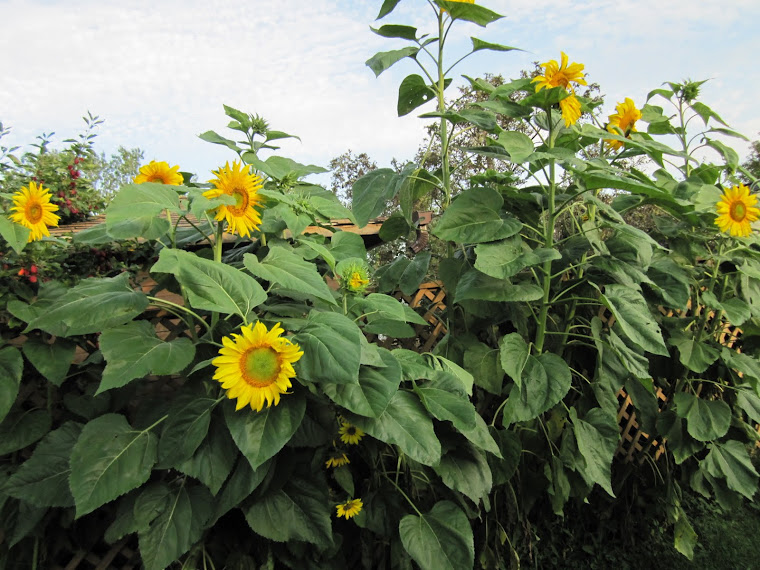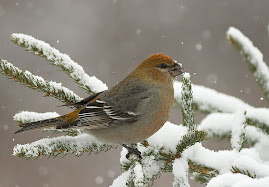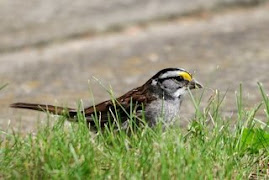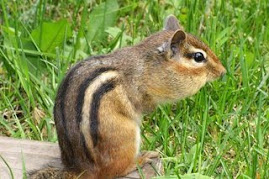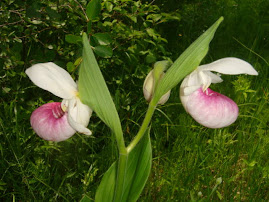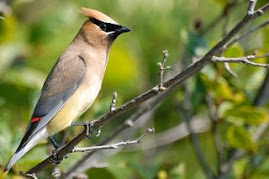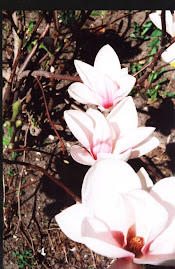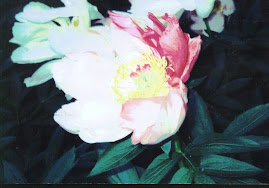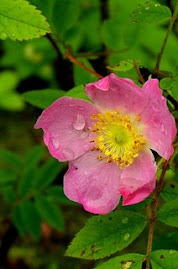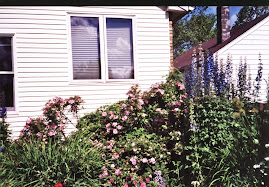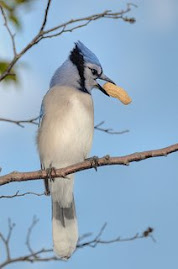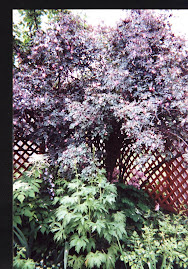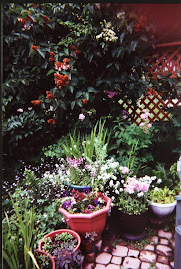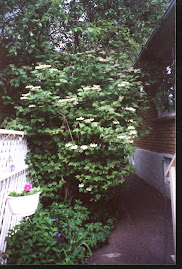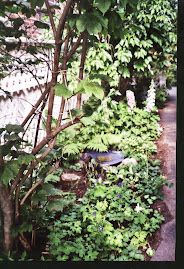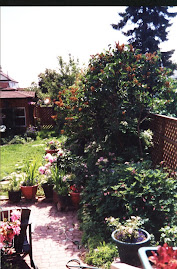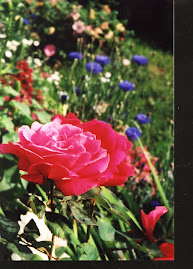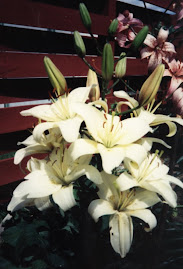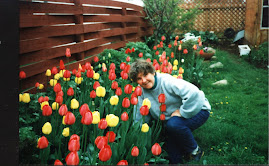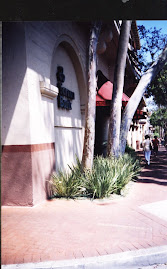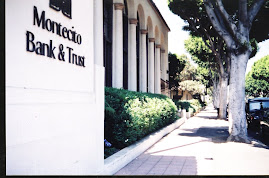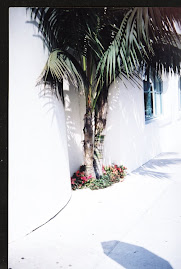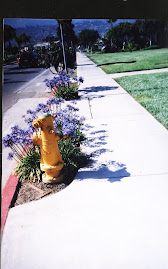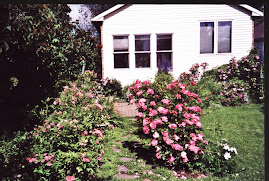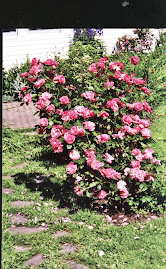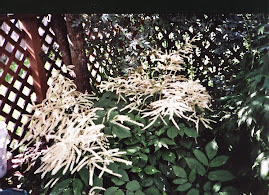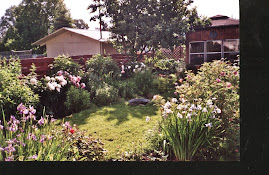I spent a week in Ouray Colorado and learned that a neighbouring village has outlawed field or ox-eye daisies. The village officials consider daisies to be weed in that mountainous area and residents are required to remove any they find on their property. However, my hosts at Main Street Bed and Breakfast in Ouray boasted a daisy garden that took up the entire small front yard. The daisies are interspersed with clumps of perennial poppies. It is hard to imagine demonizing daisies, but then we do the same to dandelions.
Daisies are invasive, I was told. However, many common garden plants spread widely given the right climate and enviroment. On the coast of California, I was shown great patches of alyssum which had spread into the wild. Here, gout weed is probably the nastiest invader but both lily of the valley and forget-me-nots can get out of hand. I have seen articles warning people against all sorts of plants: sunflowers, bachelor buttons, lupins (lupins!) and violas.
Many of the garden flowers in Colorado, Nebraska, North and South Dakota are identical to the ones growing here. Lovely bridal wreath spirea, rugosa roses, dark blue bearded iris and of course, daisies. People use a lot of bark chips around shrubs and planting. The midwest it is the land of the cedar chip.
Saturday, 28 June 2008
Friday, 27 June 2008
The Neglected Garden
This is the first June I have left my flower garden for so long - three weeks! What a jungle it is out there! Everyone tells me it rained and rained while I was away but my garden thrived except in the areas that sat in puddles. The soil is still heavy with water
Today, I started on the weeds. Grass is the main culprit, sprinting up to seed through the iris and the arabis. I am not only weeding but adding compost as mulch as I move through the beds.
The yellow rose I planted last year is showing buds for the first time but! the buds are pink. Instead of a Harrison Yellow regosa, I think I have a mislabeled Hansa. I do not blame the nursery for mislabelled plants. I think customers sometimes lift the labels to read them and then put them back in the wrong pot.
An article in the New York Times states that flowering plants thrive when growing in groups rather than set off out their own. Plants like their own kind. When set beside unfamiliar neigbouring plants, they put out chemical signals that say "go away." This process uses precious energy. Most garden books suggest planting perennials in groups of three or five but plants feel at home and thrive in larger groupings.
I find this interesting. Last year I planted a cluster of columbine, seven or eight in one area. I had the best columbine ever. Was it because they were happy together? Maybe I have a clue to my poor luck with astilbe. I bought one plant a couple of years ago and it has not expanded or plumped up. It has a forlorn appearance. Perhaps, it hates to be alone. If I had an astilbe group, would I get a better show? I definitely think hostas like to be together. The most beautiful hostas I have ever seen were at the Montreal Botanical Garden where they were clustered along paths in a shady garden.
Tip. if you are on River Street, take a look at the elegant plantings at Westminister United Church, corner of Madeline and River across from A&P. A beautiful row of bridal wreath spirea lines the walk, all in wondrous bloom. This Thunder Bay favourite has never looked so lovely.
Today, I started on the weeds. Grass is the main culprit, sprinting up to seed through the iris and the arabis. I am not only weeding but adding compost as mulch as I move through the beds.
The yellow rose I planted last year is showing buds for the first time but! the buds are pink. Instead of a Harrison Yellow regosa, I think I have a mislabeled Hansa. I do not blame the nursery for mislabelled plants. I think customers sometimes lift the labels to read them and then put them back in the wrong pot.
An article in the New York Times states that flowering plants thrive when growing in groups rather than set off out their own. Plants like their own kind. When set beside unfamiliar neigbouring plants, they put out chemical signals that say "go away." This process uses precious energy. Most garden books suggest planting perennials in groups of three or five but plants feel at home and thrive in larger groupings.
I find this interesting. Last year I planted a cluster of columbine, seven or eight in one area. I had the best columbine ever. Was it because they were happy together? Maybe I have a clue to my poor luck with astilbe. I bought one plant a couple of years ago and it has not expanded or plumped up. It has a forlorn appearance. Perhaps, it hates to be alone. If I had an astilbe group, would I get a better show? I definitely think hostas like to be together. The most beautiful hostas I have ever seen were at the Montreal Botanical Garden where they were clustered along paths in a shady garden.
Tip. if you are on River Street, take a look at the elegant plantings at Westminister United Church, corner of Madeline and River across from A&P. A beautiful row of bridal wreath spirea lines the walk, all in wondrous bloom. This Thunder Bay favourite has never looked so lovely.
Tuesday, 3 June 2008
Magnolias in Thunder Bay??
Margaret Rose Cunningham saw her first magnolia in Sudbury. Her own tree in her Ottawa garden has waited six years to bloom, springing forth only this year. She writes that magnolias dot Ottawa, and, she adds, that they might survive in Thunder Bay. An interesting idea!
Monday, 2 June 2008
WHAT IS SO RARE AS A DAY IN JUNE?
June at last. The leaves on the trees arrived a week late in this most cold and rainy spring of 2008. But the garden glows with arabis, muscari and tulips in bloom. Even the few vegetables I planted seem addled with sun. The gardener plans to take it easy, go on a trip, drink tea and read on the patio.
News of the new. Earwigs, previously unknown in Thunder Bay, were common last summer. They get into the house after dark. However, they avoid bright light so an outside light at night may deter them. Skunks, which prowl at night, also dislike bright light. They dig under sheds and garages but they are not very strong and a row of bricks along the edge of a building will stop them. Raccoons have been seen here and there. They are garbage eaters and scatterers. You need a good fitting lid on your garbage can. They laugh at plastic garbage cans but are stymied by metal ones. They are known for nesting in chimneys, garages, even attics.
The lawn needs cutting again. Of course it is full of dandelions. The Thunder Bay gardener has to make a decision. Attack the dandelions on your hands and knees with pointed tools spending hours perfecting the lawn or give up and enjoy life. I opt for the latter course. More and more, people are side-stepping the problem by limiting the lawn area.
But grass has its place. Nothing is stronger for foot traffic, for children's play areas or more lovely for setting off the garden beds. Unfortunately many business owners dispense with grass by paving the area with asphalt. The city also has an asphalt addiction and spreads the stuff liberally over boulevards, verges and traffic islands, blackening the landscape like an early Victorian city.
Our asphalt habit has given Thunder Bay its reputation as an ugly city. I love to drive the residential streets. At this time of year, people are planting trees and shrubs to create, in many cases, stunning gardens.
I try to avoid the asphalt streets that run like pustular scars through the city- Arthur, upper Red River Road, Memorial, Fort William Road. Unfortunately these are the streets that visitors see. Memorial Road makes me cringe. A few businesses ease the eye with plantings but they are a drop in the bucket of blackness. It makes me mad to think the banks, for example, which make millions in profit, cannot even spit out 25 bucks for a hanging basket.
Tip. Now is the time to walk the lanes and residential streets. You can pick up a lot of garden ideas on a walk.
News of the new. Earwigs, previously unknown in Thunder Bay, were common last summer. They get into the house after dark. However, they avoid bright light so an outside light at night may deter them. Skunks, which prowl at night, also dislike bright light. They dig under sheds and garages but they are not very strong and a row of bricks along the edge of a building will stop them. Raccoons have been seen here and there. They are garbage eaters and scatterers. You need a good fitting lid on your garbage can. They laugh at plastic garbage cans but are stymied by metal ones. They are known for nesting in chimneys, garages, even attics.
The lawn needs cutting again. Of course it is full of dandelions. The Thunder Bay gardener has to make a decision. Attack the dandelions on your hands and knees with pointed tools spending hours perfecting the lawn or give up and enjoy life. I opt for the latter course. More and more, people are side-stepping the problem by limiting the lawn area.
But grass has its place. Nothing is stronger for foot traffic, for children's play areas or more lovely for setting off the garden beds. Unfortunately many business owners dispense with grass by paving the area with asphalt. The city also has an asphalt addiction and spreads the stuff liberally over boulevards, verges and traffic islands, blackening the landscape like an early Victorian city.
Our asphalt habit has given Thunder Bay its reputation as an ugly city. I love to drive the residential streets. At this time of year, people are planting trees and shrubs to create, in many cases, stunning gardens.
I try to avoid the asphalt streets that run like pustular scars through the city- Arthur, upper Red River Road, Memorial, Fort William Road. Unfortunately these are the streets that visitors see. Memorial Road makes me cringe. A few businesses ease the eye with plantings but they are a drop in the bucket of blackness. It makes me mad to think the banks, for example, which make millions in profit, cannot even spit out 25 bucks for a hanging basket.
Tip. Now is the time to walk the lanes and residential streets. You can pick up a lot of garden ideas on a walk.
Labels:
asphalt habit,
earwigs,
raccoons,
ugly Thunder Bay
Subscribe to:
Comments (Atom)

